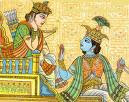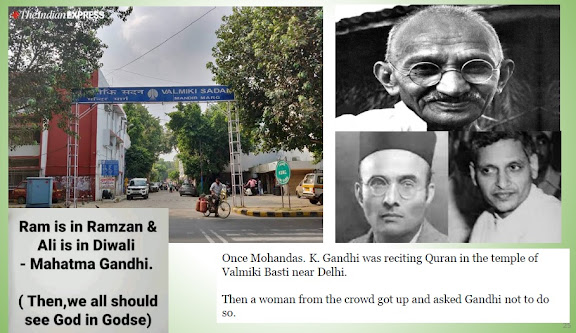Action and Attachment

Bhagavad Gita has this to state about ‘action and attachment’:
"One has to do Karma or Action without any expectation of its resultant reward or Fruit. The motive force of action should not be the fruit of action. At the same time, Non-attachment to the fruit of action should not lead into inaction. One, who works only to enjoy the fruit of his labour, is verily unhappy because one has no control over the fruit of action."
Explanatory Comments:
Explanatory Comments:
Currency note has no value as a paper, as the paper cannot boil even a cup of water. But, the same currency note can buy us enough firewood to boil not only water but also to cook our food. Such is the power of the paper in view of the stamp of authority and approval printed on it. Action becomes powerful, if the action is stamped with ‘yoga of action’. Yoga of action here means selfless action or simply action without attachment to the fruit of action.
The phrase – ‘Action without attachment to fruit of action’ contains two factors – Action or Karma and Non-attachment to fruit of action. The emphasis in the phrase is on ‘non-attachment’ and not on ‘action’. Action is compulsory to all, but performing action without attachment is more important to achieve the purpose of life – salvation. At any stage, man should not be idle – leading a life of inaction.
Performing action without attachment to the fruit does not mean performing action in any way – well or badly. One must not do action badly and then say, “I did not care about the fruit.”
Action may be bad or good. Quality of action i.e. bad or good, depends upon the situations under which the action is performed. TheAction may be perfromed under force, under contract of wage or under obligation. At the lowest level of forced labour, work is the result of compulsion. At the higher level of a free man, it springs from profit motive – material profit here or eternal profit hereafter.
But, when man grows out of his self-centred outlook, he is motivated to do work for the community, country or humanity. Some others having higher values of outlook in life. will have their works dedicated to God. Gita hails the devotion-oriented work without desire for fruit as the best of actions.
A painter devotes his full attention in painting a picture. His outlook is ‘art for art sake.’ His aim is only to complete the picture without minding time, his labour or any other factor. When completed, the picture becomes a masterpiece, which may fetch him fame and good price. Though the painter has not aimed for fame or money, the price of dedicated action are really many folds. Similarly, the outlook of a yogi towards action is to treat action as ‘act for act sake’.
The method adopted to catch monkeys will prove how action with attachment ends up in unhappiness. A handful of nuts are put into a jar with a small opening. The monkey puts his hand into the jar, grabs the nuts, and then finds that he cannot get his fist out through the opening. If the monkey would just let go of the nuts, he could escape. But he won’t. He is thus got. Nuts being the object of attachment, which the monkey is holding them tight, becomes the object of unhappiness. Attachment leads to suffering, while Detachment leads to freedom. Freedom leads to happiness.
The phrase – ‘Action without attachment to fruit of action’ contains two factors – Action or Karma and Non-attachment to fruit of action. The emphasis in the phrase is on ‘non-attachment’ and not on ‘action’. Action is compulsory to all, but performing action without attachment is more important to achieve the purpose of life – salvation. At any stage, man should not be idle – leading a life of inaction.
Performing action without attachment to the fruit does not mean performing action in any way – well or badly. One must not do action badly and then say, “I did not care about the fruit.”
Action may be bad or good. Quality of action i.e. bad or good, depends upon the situations under which the action is performed. TheAction may be perfromed under force, under contract of wage or under obligation. At the lowest level of forced labour, work is the result of compulsion. At the higher level of a free man, it springs from profit motive – material profit here or eternal profit hereafter.
But, when man grows out of his self-centred outlook, he is motivated to do work for the community, country or humanity. Some others having higher values of outlook in life. will have their works dedicated to God. Gita hails the devotion-oriented work without desire for fruit as the best of actions.
A painter devotes his full attention in painting a picture. His outlook is ‘art for art sake.’ His aim is only to complete the picture without minding time, his labour or any other factor. When completed, the picture becomes a masterpiece, which may fetch him fame and good price. Though the painter has not aimed for fame or money, the price of dedicated action are really many folds. Similarly, the outlook of a yogi towards action is to treat action as ‘act for act sake’.
The method adopted to catch monkeys will prove how action with attachment ends up in unhappiness. A handful of nuts are put into a jar with a small opening. The monkey puts his hand into the jar, grabs the nuts, and then finds that he cannot get his fist out through the opening. If the monkey would just let go of the nuts, he could escape. But he won’t. He is thus got. Nuts being the object of attachment, which the monkey is holding them tight, becomes the object of unhappiness. Attachment leads to suffering, while Detachment leads to freedom. Freedom leads to happiness.



Comments